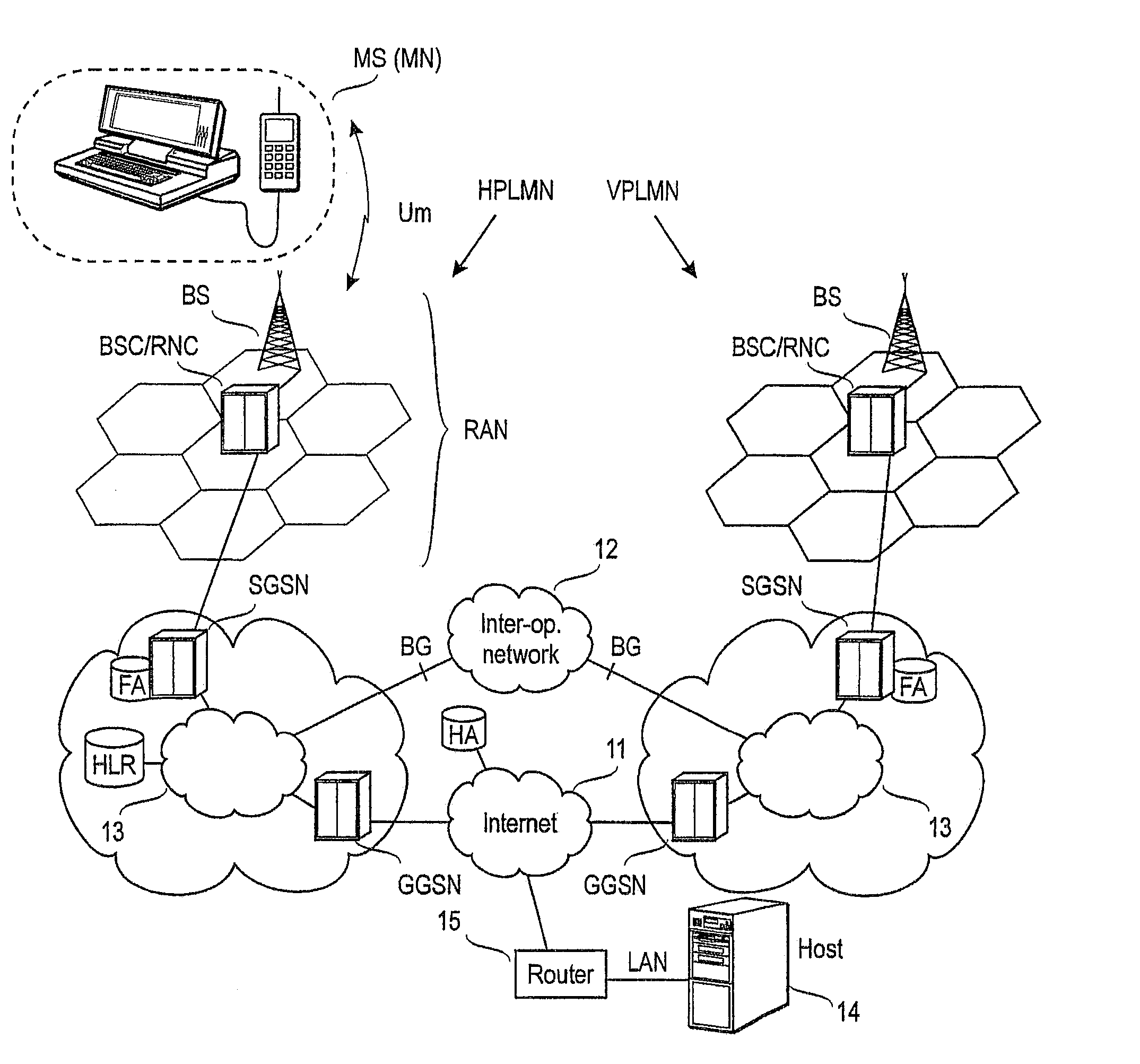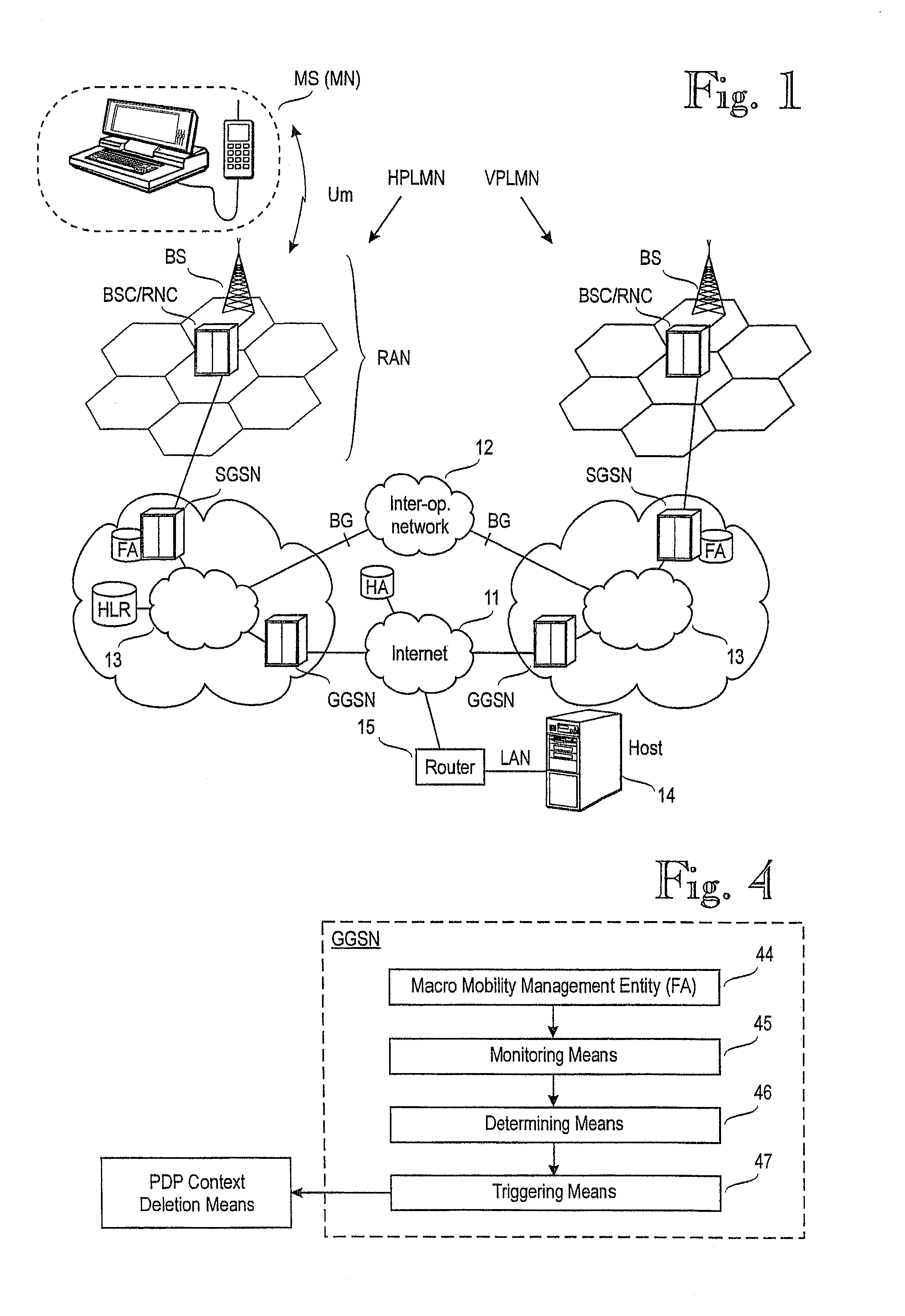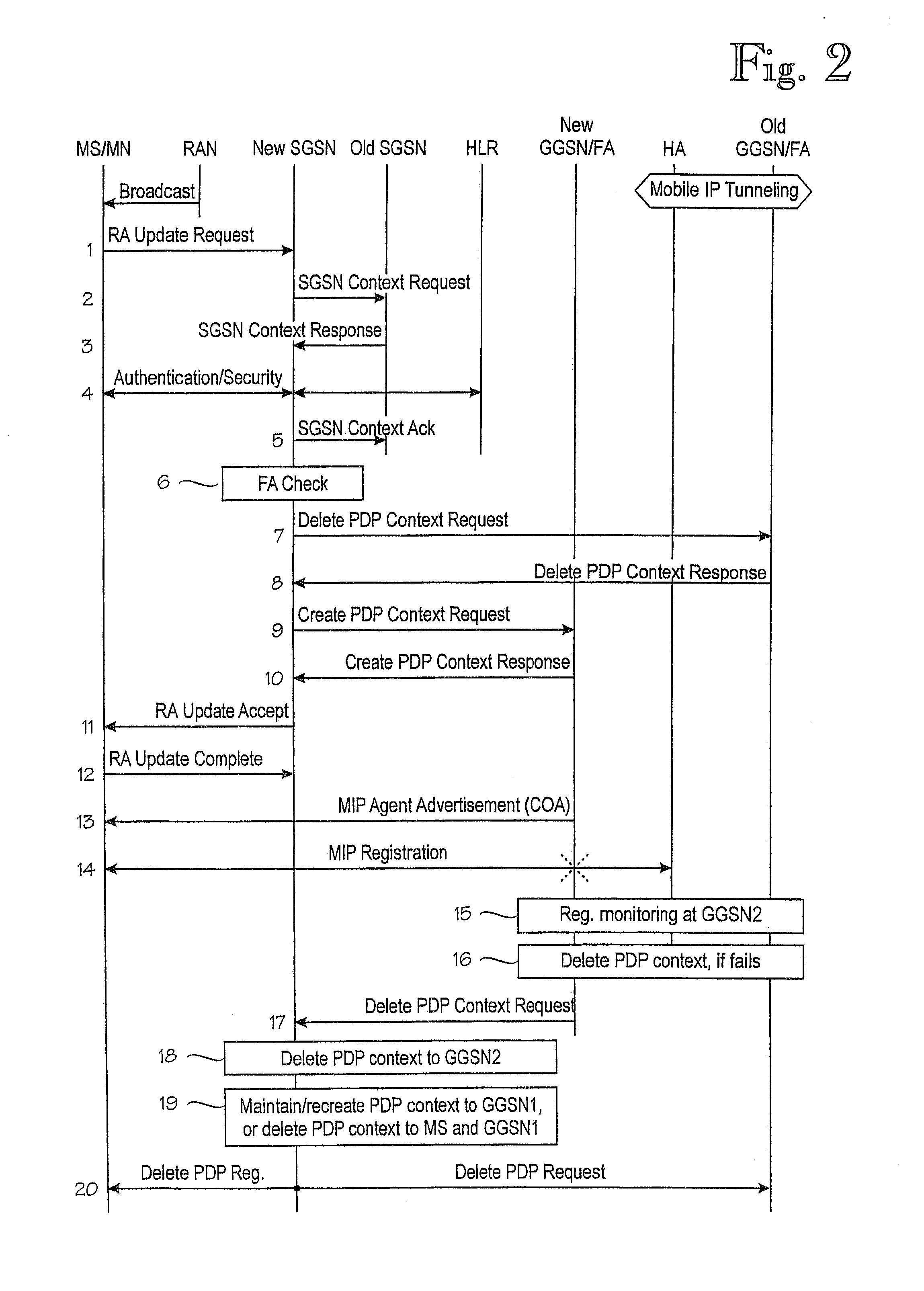Access context management for macro-level mobility management registration in an access network
a technology of access context and access network, applied in the direction of digital transmission, wireless communication, wireless commuication services, etc., can solve the problems of inability to know, inefficient routing, and the basic ip concept does not support the mobility of users, so as to avoid unnecessary use of access network resources and reduce signaling
- Summary
- Abstract
- Description
- Claims
- Application Information
AI Technical Summary
Benefits of technology
Problems solved by technology
Method used
Image
Examples
Embodiment Construction
[0027]The present invention can be applied to any communications requiring macro mobility management which overlays the mobility management of an access network. The invention is especially well suited for supporting mobile IP-type mobility management in an access network. The access network may be any access network, such as a radio access network. The invention is preferably used for providing a general packet radio service GPRS in the pan-European digital mobile communications system GSM (Global System for Mobile Communication) or in corresponding mobile communications systems, such as DCS1800 and PCS (Personal Communication System), or in third generation (3G) mobile systems, such as UMTS, implementing a GPRS-type packet radio. In the following, the preferred embodiments of the invention will be described by means of a GPRS packet radio network formed by the GPRS service and the 3G or GSM system without limiting the invention to this particular access system.
[0028]A GPRS archite...
PUM
 Login to View More
Login to View More Abstract
Description
Claims
Application Information
 Login to View More
Login to View More - R&D
- Intellectual Property
- Life Sciences
- Materials
- Tech Scout
- Unparalleled Data Quality
- Higher Quality Content
- 60% Fewer Hallucinations
Browse by: Latest US Patents, China's latest patents, Technical Efficacy Thesaurus, Application Domain, Technology Topic, Popular Technical Reports.
© 2025 PatSnap. All rights reserved.Legal|Privacy policy|Modern Slavery Act Transparency Statement|Sitemap|About US| Contact US: help@patsnap.com



